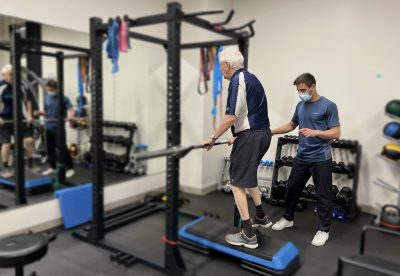Improving Healthcare Accessibility in Underserved and Rural Areas:
Introduction:
Access to quality healthcare is a fundamental human right, yet many underserved and rural areas face significant challenges in obtaining necessary medical services. These challenges stem from a variety of factors, including geographical isolation, limited healthcare infrastructure, and socio-economic barriers. Addressing these issues requires a multifaceted approach, combining policy reforms, technological advancements, and community-based initiatives. This blog explores seven key efforts aimed at improving healthcare accessibility in underserved and rural areas, highlighting innovative solutions and their potential impact.
Enhancing Telemedicine Services:
Telemedicine has emerged as a powerful tool in bridging the gap between healthcare providers and patients in remote locations. By leveraging technology, telemedicine allows patients to consult with healthcare professionals via video calls, phone calls, or online messaging. This approach significantly reduces the need for travel, saving time and resources for both patients and providers. The expansion of telemedicine services has been particularly beneficial during the COVID-19 pandemic, as it minimizes the risk of virus transmission. Moreover, telemedicine enables continuous care for chronic conditions, mental health support, and timely medical consultations, even in areas lacking specialist services. To maximize the benefits of telemedicine, it is crucial to address barriers such as internet connectivity issues and digital literacy. Implementing robust telehealth infrastructure and providing training to both healthcare professionals and patients can enhance the effectiveness of telemedicine in underserved and rural areas.
Mobile Health Clinics:
“Mobile health clinics offer a flexible and effective solution to healthcare accessibility challenges in remote areas. These clinics are essentially medical facilities on wheels, equipped with essential medical equipment and staffed by healthcare professionals. They travel to underserved communities, providing a range of services including primary care, preventive screenings, vaccinations, and health education. Mobile health clinics are particularly effective in reaching populations that face barriers to accessing stationary healthcare facilities, such as transportation issues or financial constraints. By bringing healthcare services directly to the community, these clinics can improve health outcomes and foster trust between healthcare providers and patients. Moreover, mobile health clinics can serve as a valuable resource during public health emergencies, offering rapid response and support in areas affected by natural disasters or disease outbreaks”. Says, Allen Seavert, Director of American TMS Clinics.
Strengthening Rural Health Workforce:
A significant challenge in rural healthcare is the shortage of healthcare professionals. To address this issue, efforts must focus on both attracting and retaining healthcare providers in rural areas. Several strategies can be employed to strengthen the rural health workforce:
Incentive Programs: “Financial incentives, such as loan repayment programs and competitive salaries, can attract healthcare professionals to rural areas. These programs can help offset the costs of medical education and make rural practice more appealing”. Says, Carney, Owner of Natural Growth
Education and Training: Establishing rural health training programs and residencies can encourage medical students and residents to pursue careers in rural healthcare. Exposure to rural practice during training can increase the likelihood of healthcare professionals choosing to work in these areas.
Professional Support: “Providing ongoing professional development and support can help retain healthcare providers in rural areas. Initiatives such as tele-mentoring, access to continuing education, and opportunities for professional networking can reduce the sense of isolation and enhance job satisfaction”. Says, Dr. Ernst von Schwarz, PhD, a clinical and academic cardiologist clinical professor of medicine at UCLA and author of “The Secrets of Immortality.”
Improving Healthcare Infrastructure:
Investing in healthcare infrastructure is essential for ensuring that underserved and rural areas have access to quality care. This includes building and upgrading healthcare facilities, as well as ensuring they are adequately equipped and staffed.
Facility Upgrades: “Renovating existing healthcare facilities and building new ones can improve access to care. Modern, well-equipped facilities attract healthcare professionals and provide a higher standard of care for patients”. Says, Says Sam Arthur, Head of Marketing at Our PCB
Equipment and Supplies: Ensuring that healthcare facilities have the necessary medical equipment and supplies is crucial. This includes everything from basic diagnostic tools to advanced medical technology. Regular maintenance and timely replacement of outdated equipment are also essential.
Emergency Services: “Enhancing emergency medical services (EMS) in rural areas can save lives. This involves improving the capabilities of EMS teams, providing advanced training, and ensuring that ambulances and other emergency vehicles are well-equipped and maintained”. Says, Dr. Angela Fitch, cofounder of Knownwell and president of the Obesity Medicine Association
Community Health Workers:
Community health workers (CHWs) play a vital role in improving healthcare access in underserved areas. These individuals, often members of the communities they serve, act as a bridge between healthcare providers and patients. They provide health education, support chronic disease management, and assist with navigating the healthcare system.
Health Education: “CHWs educate community members about preventive care, healthy lifestyles, and managing chronic conditions. This can lead to improved health behaviors and reduced disease incidence”. Says, Ted Kyle, RPh, founder of ConscienHealth
Patient Navigation: CHWs help patients understand their healthcare options, schedule appointments, and access necessary services. This support is especially valuable for individuals facing language barriers, transportation issues, or other obstacles.
Chronic Disease Management: “CHWs assist patients in managing chronic conditions such as diabetes, hypertension, and asthma. By providing regular check-ins and support, they can help patients adhere to treatment plans and avoid complications. Investing in training and supporting CHWs can significantly enhance healthcare access and outcomes in underserved and rural areas. Their presence in the community fosters trust and ensures that healthcare messages are culturally relevant and well-received”. Says, Dr. Angela Fitch, cofounder of Knownwell and president of the Obesity Medicine Association
Leveraging Technology for Health Education:
Technological advancements offer innovative solutions for health education and awareness in underserved areas. By leveraging digital platforms, communities can access vital health information and resources, leading to better health outcomes.
E-Learning Platforms: Online courses and webinars can provide continuous medical education for healthcare professionals in rural areas. These platforms offer flexibility, allowing professionals to learn at their own pace and stay updated on the latest medical advancements.
Health Apps: Mobile applications designed for health education can empower individuals to take control of their health. These apps can provide information on disease prevention, symptom tracking, medication reminders, and lifestyle tips.
Social Media Campaigns: Utilizing social media to disseminate health information can reach a wide audience. Public health campaigns on platforms like Facebook, Instagram, and Twitter can raise awareness about important health issues and promote healthy behaviors.
By integrating technology into health education, rural and underserved communities can benefit from improved access to information, leading to better health literacy and outcomes.
Policy Reforms and Advocacy:
Policy reforms play a critical role in addressing systemic barriers to healthcare access in underserved and rural areas. Advocacy efforts are essential to drive these reforms and ensure that healthcare policies are equitable and inclusive.
Healthcare Funding: Advocating for increased funding for rural healthcare can support the development and maintenance of healthcare infrastructure, workforce training, and telemedicine services. Adequate funding ensures that rural communities have the resources needed to provide quality care.
Medicaid Expansion: Expanding Medicaid in states that have not yet done so can provide health coverage to low-income individuals in rural areas. This expansion can reduce the number of uninsured individuals and improve access to necessary medical services.
Policy Development: Developing policies that address the unique challenges faced by rural healthcare systems is crucial. This includes policies that support rural hospitals, incentivize healthcare providers to work in rural areas, and ensure access to mental health and substance abuse services.
Conclusion:
Improving healthcare accessibility in underserved and rural areas requires a comprehensive and multi-faceted approach. By enhancing telemedicine services, deploying mobile health clinics, strengthening the rural health workforce, investing in healthcare infrastructure, supporting community health workers, leveraging technology for health education, and advocating for policy reforms, we can make significant strides toward ensuring that all individuals have access to quality healthcare. These efforts not only address immediate healthcare needs but also contribute to long-term health equity and sustainability. By prioritizing the health of underserved and rural communities, we can build a healthier, more inclusive society for everyone.
Stay tuned for more news & updates on Snapchat!





